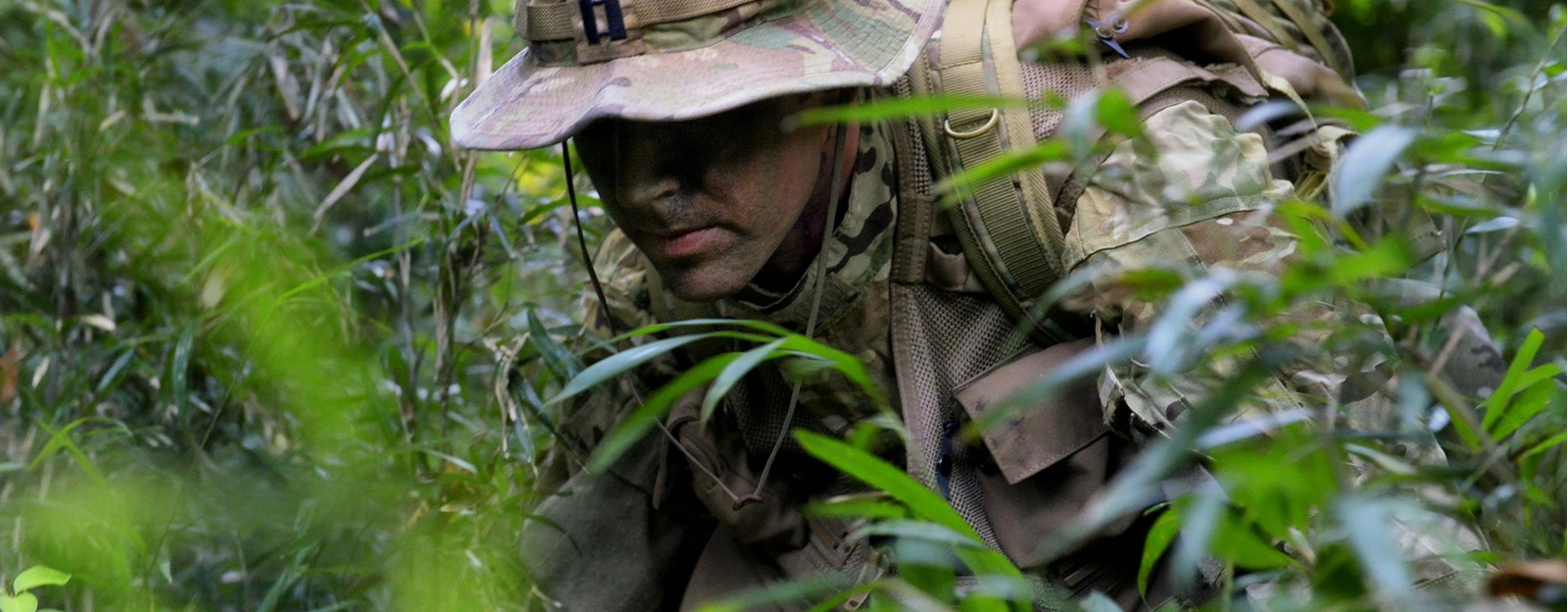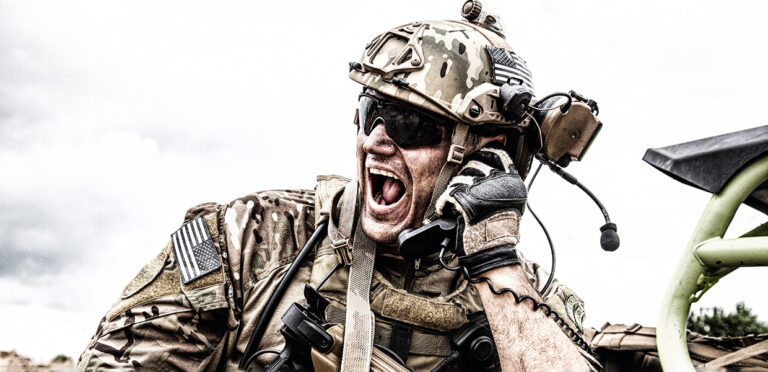SERE 100.2 – Survive. Evade. Resist. Escape.
SERE (Survival, Evasion, Resistance, and Escape) is a comprehensive military training program designed to prepare personnel for worst-case scenarios, such as becoming isolated behind enemy lines or captured. It teaches essential skills to survive, evade capture, resist interrogation, and escape from hostile environments. The training is highly demanding both physically and mentally and is a mandatory course for many military roles, including the Navy SEALs.
Below is a study guide to help you succeed with your SERE CBT. Passing the Pre-Test can save you hours of clicking through the content, especially if this isn’t your first time doing it. The training can be found on JKO. As a reminder, this information is sourced from publicly-available sources such as Quizlet and Google.
Pre-Test
Q: During a hole-up what is your primary concern?
A: Security.
Q: The senior ranking military member should never take command of all prisoners, in all captivity situations, to ensure survivability.
A: False
Q: What are the goals of using a disguise? (Select all that apply)
A: Prevent recognition; Pass initial scrutiny.
Q: Tactical hand-held radio transceivers, cell phones, satellite phones, and personal locator beacons (PLBs) are devices you could use for electronic communication.
A: True.
Q: what evasion aid is tailored to cover an individual operational area, combining standard navigation chargs and maps with evasion and survival information?
A: Evasion Chart
Q: Which evasion aids can asist you with making contact with the local populatino (Select all that apply)
A: Pointee-Talkee, Blood Chit
Q: The Evasion Plan of Action (EPA) provides recovery forces the following information should you become isolated (Select all that apply).
A: Your evasion intentions and key recovery information; It helps them to anticpate your actions and intentions; Details the methods and procedures you intend to use to communicate with recovery forces.
Q: Limiting the amount of personal information available to others includes reducing your ______ footprint, and personal information items not required for your operatinal mission such as credit cards and other identifiable items in your wallet or purse.
A: Social Media
Q: What pre-deployment document requires you to provide, four personal authentication statements, full front and right side photographs and fingerprints?
A: DD Form 1833 Isolated Personnel Report (ISOPREP)
Q: Resistance to exploitation is a BATTLE OF WITS with your captor.
A: False
Q: When are personnel ALWAYS authorized to escape?
A: When in physical or mortal danger
Q: the three basic food sources during isolation are packed rations, animals and insects, and plants.
A: True
Q: What are some de-escalation strategies personnel can use to discourage captor violence (Select all that apply).
A: Maintain a low profile; Be conscious of your body language
Q: Upon your release, a DoD Public Affairs Officer (PAO) will be available to help you. Their goal is to __________. (Select all that apply).
A: Coordinate your interactions with the media; Help you regain control over your life.
Q: Leaving evidence of yoru presence supports U.S. Government effort to locate, identify and recover you.
A: True
Q: To which article of the Code of Conduct does the following statement refer? If captured I will continue to resist by all means available. I will make every effort to escape and aid others to escape. I will accept neither parole nor special favors from the enemy.
A: Article III
Q: Which of the following are criteria for selecting a shelter site? (Select all that apply).
A: The area is large enough for you and your equipme; Provides natural protection from the environment, hazards and threats; Sufficient materials are available for constructing a shelter.
Q: The Code of Conduct ________ for military members when isolated or held against their will by entities hostile to the U.S..
A: Describes basic responsibilities and obligations
Q; which of the following are used to control bleeding? (Select all that apply).
A: Apply direct pressure; Use a tourniquet; elevate and immobilize
Q: Selecting a signaling site and putting your signal in a suitable location is critical. A signaling site is defined as any site, based on your situation that enhances signaling efforts and the likelihood for the signal to be detected by friendly forces. What is a signaling site criterion? (Select all that apply).
A: Sufficient materials for signal construction; recovery possible from/near site; Site hidden from potential enemy observation and ground fire.
Q: Identify some posture and resistance constants of an effective resistance posture. (Select all that apply)
A: Stall; Bounce Back; Control Emotions
Q: An effective memory tool that can assist youw ith using situational awareness during an isolating event is the acronym PAID-E, which stands for perceive, ______, interpret, decide and execute.
A: Analyze
Q: Identify elements of Article II of the Code of Conduct (Select all that apply).
A: During military operations outside declared hostilities you may delay contact with local authorities; Military members are never authorized to surrender.
Q: You should attempt to provide proof of life during any audio or video recording or written documents.
A: True.
Q: You should limit your communication with the captor to which of the following?
A: Identify yourself; Address health and welfare concerns; Ask to be returned to U.S. control; State the innocent circumstances leading to capture.
Q: Actions to take when capture is imminent include: (Select all that apply)
A: Sanitize personal or sensitive materials; Communicate your situation; Leave evidence of presence at capture point; Try to retain your personal cell phone.
Q: The two types of reporting isolating events are observer-reported and media reporting.
A: False
Q: Identify steps in building a fire. (Select all that apply)
A: Prepare adequate amounts of tinder, kindling and fuel; Use a platform; Carefully place small, dry kindling over the burning tinder.
Q: As part of your resistance posture you should portray _______ at all times.
A: Innocence
Q: To which article of the code of Conduct does the following statement refer? When questioned, should I become a prisoner of war, I am required to give name, rank, service number and date of birth. I will evade answering further questions to the utmost of my ability. I will make no oral or written statements disloyal to my country and its allies or harmful to their cause.
A: Article V
Q: The Code of Conduct describes your basic responsibilities and obligations from isolation to captivity resolution.
A: True
Q: What are some methods to purify water? (Select all that apply)
A: Boiling vigorously for at least one minute; Purifying with a commercial micro filter; Chemically treating water with chlorine or iodine.
Q: What should you do during USG negotiations for your release? (Select all that apply)
A: have faith in the USG; Remain professional and avoid exploitation; Maintain your honor and communicate your innocence.
A: In the event of isolation during operations other than war, the reasons to delay contact with legitimate authorities include: (Select all that apply)
A: Gain situational awareness; Contact friendly forces
Q: Should your captors provide an opportunity to communicate using written, oral or video means, you should:
A: Provide proof of life
Q: Continuously learning about your captivity environment and the captor is known as _______.
A: Situational Awareness
Q: When providing proof of life what information should you include? (Select all that apply).
A: A verifiable date; your health and welfare; You and your fellow captives’ identities.
Q: One way to gain acceptance from the local population after making contact is to discuss the similarities between your religions. This helps to show you are peaceful and mean no harm.
A: False
Q: The weakened state of the captives’ _______ reduces their capacity to collectively resist adversary exploitation efforts. Acceptance of special favors also provides an opening for an adversary’s future exploitation efforts against you.
A: Organization
Q: During a direct action recovery, you should pick up a weapon and assist the recovery team.
A: False
Q: What are appropriate means for leaving evidence of presence? (Select all that apply)
A: DNA, Fingerprints, Notes
Q: When using a visual signal to support your recovery efforts, guidelines to follow include: (Select all that apply)
A: Size, Contrast, Ratio
Q: According to Article V of the Code of Conduct, which of the following topics are you authorized to discuss in all captivity situations? (Select all that apply).
A: The innocent circumstances leading to your capture; Your health and welfare; the health and welfare of fellow captives.
Q: Which reintegration phase moves the recovered person to the continental United States?
A: Phase III
Q: Your resistance goals include which of the following? (Select all that apply)
A: Focus on your authorized communications; Resist providing a confession.
Q: The first personnel recovery (PR) task is _________. This task activates the execution portion of the PR system.
A: Report







